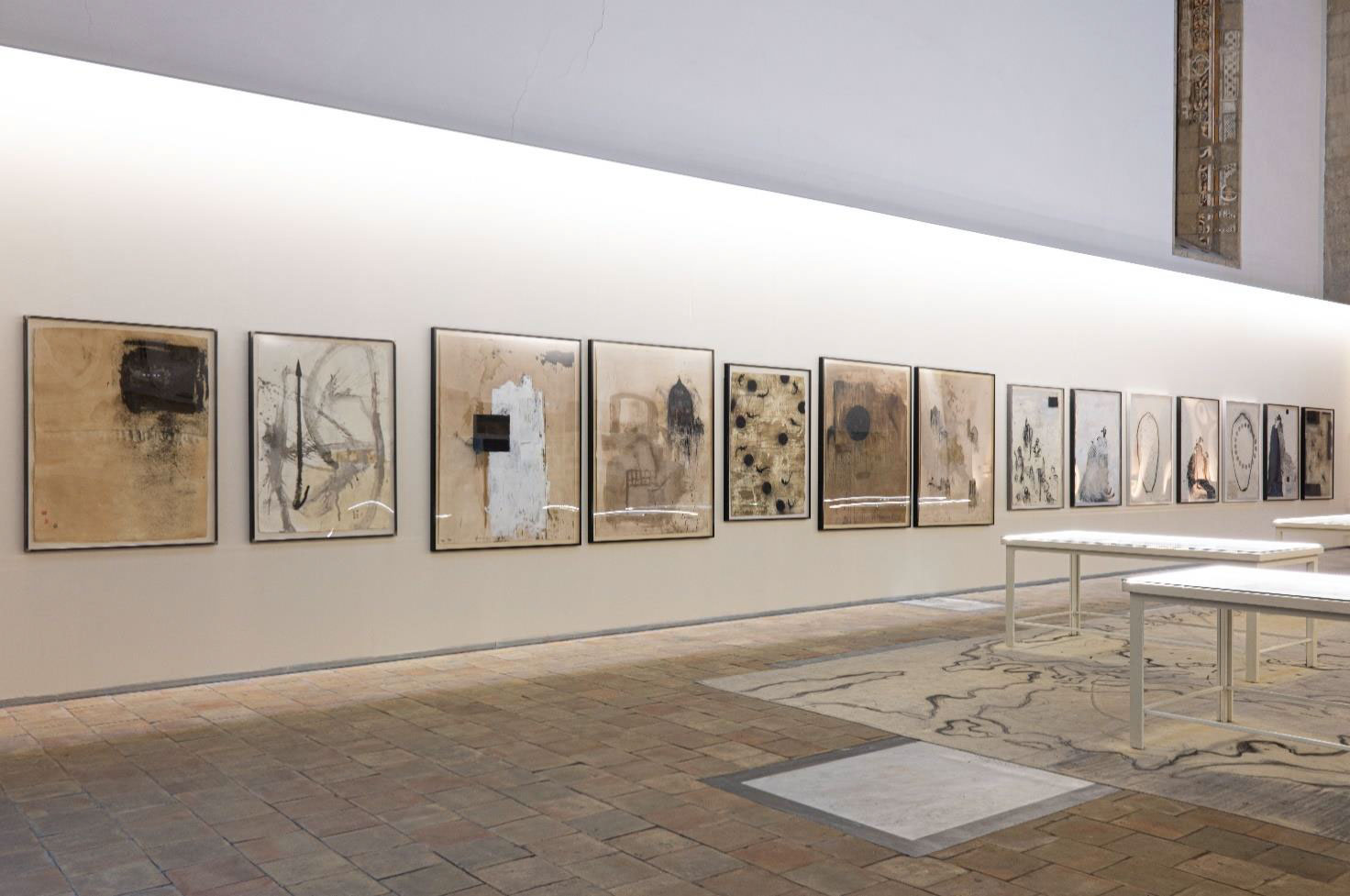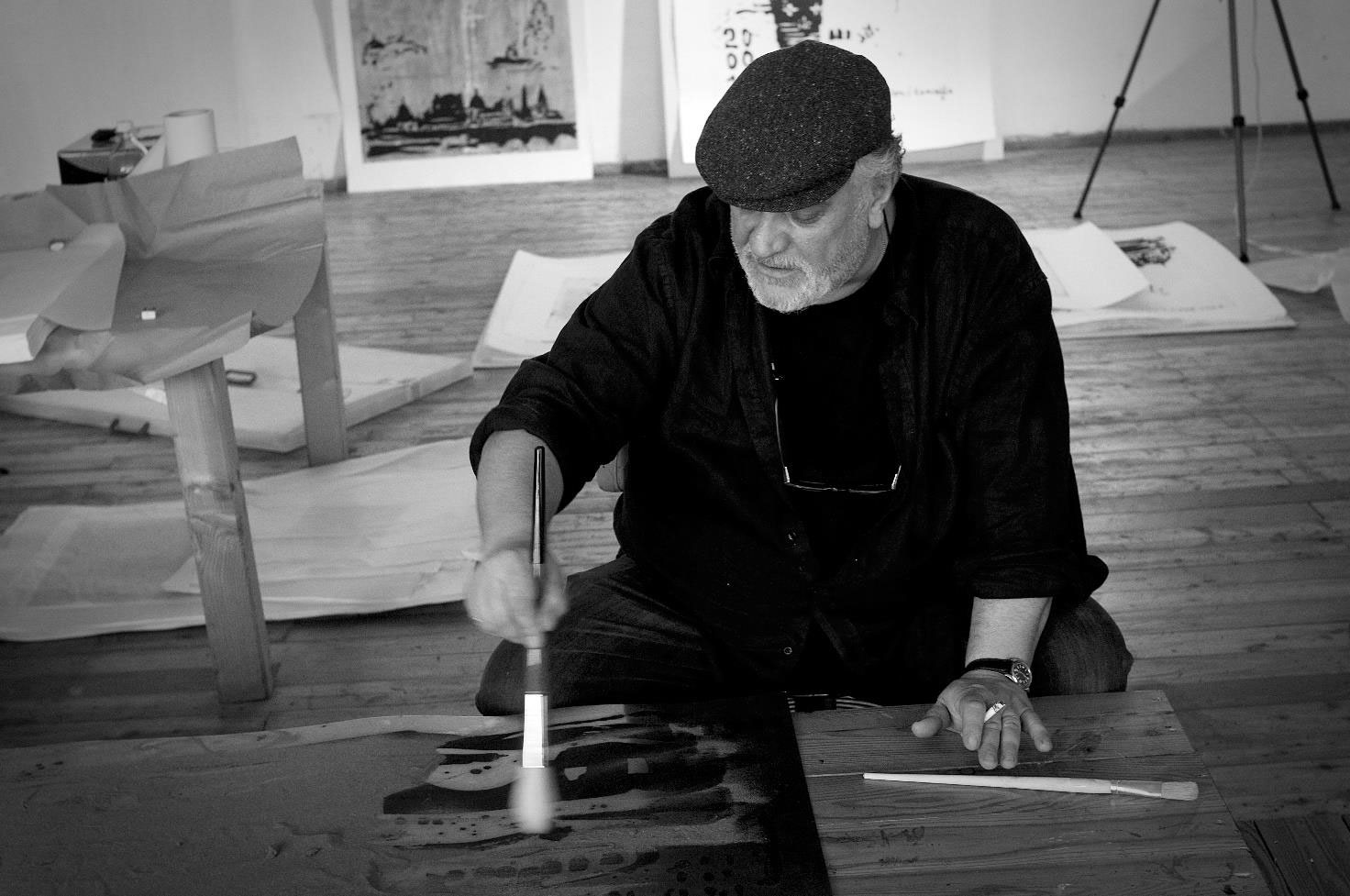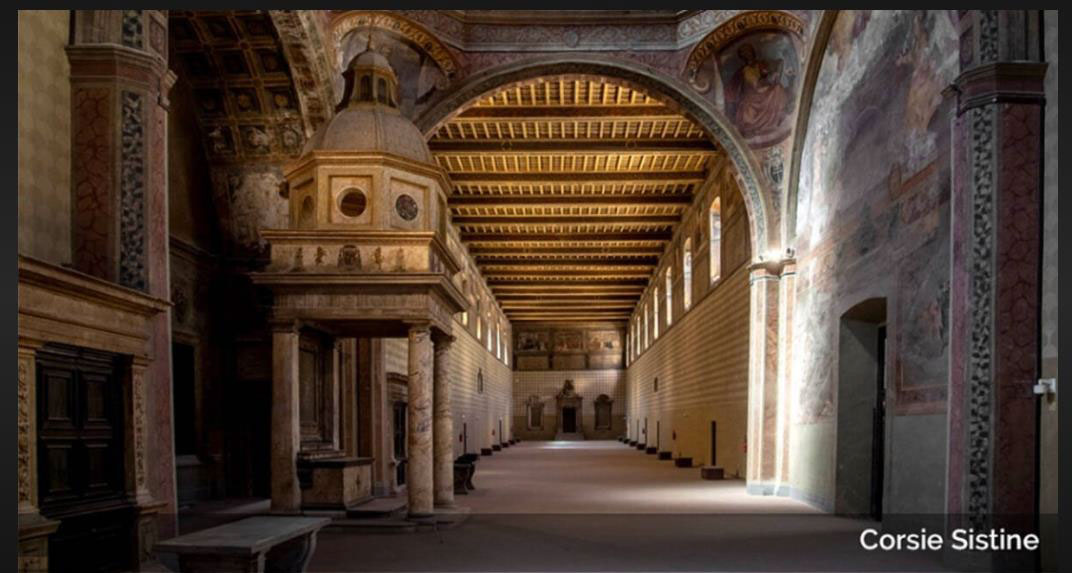The strong evocative power that emanates from the Sistine Lanes, in which the ancient function of hospitality and care for which they were built is still palpable, makes it the perfect place to host the series of ninety-nine large canvases created between 2015 and 2016 by Piero Pizzi Cannella.
LE MIGRANTI
PIERO PIZZI CANNELLA
From 11.04.2024 to 27.04.2024
Rome – Corsie Sistine – Borgo Santo Spirito, 1


PIERO PIZZI CANNELLA

PIERO PIZZI CANNELLA
Piero Pizzi Cannella was born in 1955 in Rocca di Papa (RM).
Since 1975 he attended Alberto Ziveri’s painting course at the Academy of Fine Arts in Rome and at the same time enrolled in the Philosophy course at La Sapienza University. He held his first solo exhibition in 1978, at the Galleria La Stanza in Rome. In 1982 he established his studio in the former Cerere pasta factory, in the San Lorenzo district, creating, together with Bruno Ceccobelli, Gianni Dessì, Giuseppe Gallo, Nunzio and Marco Tirelli, the Scuola di San Lorenzo.
The same year saw his first solo exhibition at Fabio Sargentini’s Galleria L’Attico in Rome (a gallery with which he still collaborates). In the same season (1984-1985) followed the solo shows in New York (Annina Nosei Gallery), that of Berlin (Folker Skulima Galerie) and, in the following year, the one at the Triebold Gallery in Basel (gallery with which he would work until 2002 ).
Over the years, he also holds several personal exhibitions in private galleries in Italy and abroad: Galleria Cannaviello in Milan (1987, 1990, 1991, 1996); Vidal-Saint Phalle Gallery in Paris (1990, 1993, 1997, 1999, 2004, 2008, 2014); Bagnai Gallery of Siena and Florence (1991, 1994, 1997, 1999, 2002, 2006, 2010, 2013); Di Meo Gallery in Paris (1993, 1997, 2006); Otto Gallery in Bologna (1998, 2000, 2004, 2008, 2013); Galleria Volume in Rome (2000); Lo Scudo Gallery in Verona (2003); Bibo’s Place Gallery in Todi (2016) and Rome; Pastificio Cerere Foundation of Rome (2016); Mucciaccia Gallery in Rome (2012, 2019); Singapore at Partners & Mucciaccia Gallery (2014) and in 2018 at the Gallery’s London branch.
Museums and public spaces have dedicated personal exhibitions to him over the years: Doors of the East, a traveling exhibition in museums in the former Yugoslavia (1989); War diaries at the Civic Museum of Gibellina (1991); Pizzi Cannella in the Santa Maria della Scala headquarters in Siena (1997); Papers 1980-2001 at the Archaeological Museum of Aosta (2001); Polyptychs at the Colonna Castle-International Center for Contemporary Art in Genazzano (2003); The Maps of the World at the India Theater in Rome (2004);
Pizzi Cannella, sept ou huit chambres à l’Hotel des Arts in Toulon (2004); Cathedral at MACRO Testaccio in Rome (2006-2007); Chinatown. Invitation to travel, a traveling exhibition set up at the Pagliere of the Palazzo Pitti Complex in Florence (2010), in 2011 at the Mudima Foundation in Milan and, subsequently, at the Museum of Modern Art of Saint-Étienne; Bon à tirer in the headquarters of the Modern Art Gallery of Udine (2011); Pizzi Cannella-Ceramics at the International Museum of Ceramics in Faenza (2013); Pizzi Cinnamon, La Fontana Ferma. Bronze castings 1987-2013 in the Monumental Complex, Bourbon Prison of Avellino (2015); Pizzi Cannella at the Estorick Collection of Modern Art in London (2015); Pizzi Cannella-La Habana at the Josè Martì National Library of Havana (2015); Piero da Todi at the Hall of Stones, Municipal Buildings of Todi (2016); Salon de Musique and other paintings in the prestigious rooms of the Winter Palace, Hermitage in St. Petersburg (2017); Almanac Napoli in the Palatine Chapel of the Maschio Angioino in Naples (2019). He takes part in numerous events and collective exhibitions. His works are permanently exhibited in important public and private collections, including: Palazzo Reale in Milan, Gallery of Modern and Contemporary Art in Turin, Gallery of Modern Art in Bologna, Mumok Museum in Vienna, Hotel des Arts in Toulon, Museum of Contemporary Art in Beijing, MACRO in Rome, San Giorgio in Poggiale in Bologna, Biedermann Motech in Villingen-Schwenningen (Germany), at the Museum of Modern Art of Saint Etienne (France) and at the Hermitage in St. Petersburg.
The artist described the project as follows: “The works that I would like to exhibit in the Sistine Lanes were carried out in 2015/2016. At the time I didn’t think I should talk about this problem: migrations certainly didn’t arise in those years but perhaps date back to thousands of years ago.
The exhibition tells; each painting is ultimately a presentation and representation of an intimate, political, religious feeling.
The title of the exhibition is “The Migrants” not because it is an exclusive female problem but I like to consider the feeling almost exclusive to them. We are all migrants and women, mothers, wives, daughters more like the Virgin Mary was for Jesus. It’s very simple! Behind the wet and dirty tracksuits in colorful plastic bags, I believe that every migrant hides a festive dress, a dress in memory of a rite, of a sacrament for her or for those closest to her. All this is the secret, the memory of their life. Of a life that a dangerous journey could one day rebuild, even if someone is no longer with them.
Migrants are an international condition, not a temporary phenomenon
this exhibition I collected some of them. Each of them has as a subtitle on the back of the canvas small passages collected in newspapers or orally over time.” (Piero Pizzi Cannella)
To strengthen the idea of the “journey” also in the visitor, the canvases could be hung on invisible threads, which would almost make them theatrical wings, around which anyone can wander and be influenced by the possible stories evoked. This is because for Pizzi Cannella it is not so much the physical space that matters, but rather the mental one, in which every single element refers to sounds, emotions and memories that evoke human adventure. In which the clothes are almost the residue, the condensation of what people left behind when they fled.
The clothes, unadorned or elegant, transparent and light or important and elaborate, are made of pictorial material. With strokes of the brush the dense and precious material contrasts with the large rough areas, deliberately left bare.
Pizzi Cannella’s clothes are, therefore, allusive to possible stories that can be imagined differently by each spectator or visitor to the exhibition. Especially now this approach seems very topical; in the era in which we live, in which the traveler is no longer just a pilgrim who arrives in Rome for religious purposes, but is often also a migrant who necessarily has to leave much of his own experience behind, it is important to solicit food for thought also with poetry and art.
Pizzi Cannella loves to deal with large spaces. Among the latest installations, it is worth mentioning the one in the Palatine Chapel of the Maschio Angioino in Naples (2019), in which a large geographical map painted on paper was positioned on the floor, while a multitude of precious works on paper were pinned to the walls.

